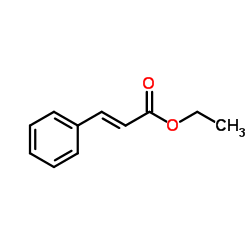Larvicidal activity of Kaempferia galanga rhizome phenylpropanoids towards three mosquito species.
Nam-Jin Kim, Sang-Gi Byun, Jang-Eun Cho, Keun Chung, Young-Joon Ahn
文献索引:Pest Manag. Sci. 64(8) , 857-62, (2008)
全文:HTML全文
摘要
This study was aimed at assessing the toxicity of ethyl cinnamate and ethyl p-methoxycinnamate (EMC) identified in Kaempferia galangal L. (Zingiberaceae) rhizome and another 12 known compounds to third-instar larvae from laboratory-reared Culex pipiens pallens Forskal, Aedes aegypti L. and Ochlerotatus togoi Theobald and field-collected C. pipiens pallens (Jinhae colony). Results were compared with those for fenthion and temephos.Ethyl p-methoxycinnamate was the most toxic of the test compounds to larvae of the three mosquito species (LC(50) 12.3-20.7 mg L(-1)) but less toxic than either fenthion (0.0096-0.021 mg L(-1)) or temephos (0.0039-0.0079 mg L(-1)). Ethyl cinnamate and 3-carene were highly active against C. pipiens pallens larvae (24.1 and 21.6 mg L(-1)) but less toxic to A. aegypti and O. togoi larvae (ca 40 and 60 mg L(-1) respectively). The toxicity of these compounds to larvae from the Jinhae colony of C. pipiens pallens was almost the same as their toxicity to the laboratory-reared larvae, although the larvae from the colony exhibited low levels of resistance to fenthion (resistance ratio 9.1) and temephos (5.8).Kaempferia galanga rhizome-derived materials, particularly ethyl p-methoxycinnamate, merit further study as potential mosquito control agents for protection of humans and domestic animals from vector-borne diseases and nuisance caused by mosquitoes.
相关化合物
| 结构式 | 名称/CAS号 | 分子式 | 全部文献 |
|---|---|---|---|
 |
肉桂酸乙酯
CAS:103-36-6 |
C11H12O2 |
|
Volatile Compounds from Grape Skin, Juice and Wine from Five...
2015-01-01 [Molecules 20 , 10980-1016, (2015)] |
|
Novel natural product-based cinnamates and their thio and th...
2011-11-01 [Eur. J. Med. Chem. 46 , 5498-511, (2011)] |
|
[Effects of allelochemicals ethyl cinnamate on the growth an...
2013-01-01 [Huan Jing Ke Xue 34(1) , 156-62, (2013)] |
|
Sedative activity of hexane extract of Keampferia galanga L....
2008-10-30 [J. Ethnopharmacol. 120(1) , 123-5, (2008)] |
|
Pine weevil (Hylobius abietis) antifeedants from lodgepole p...
2001-11-01 [J. Chem. Ecol. 27(11) , 2253-62, (2001)] |